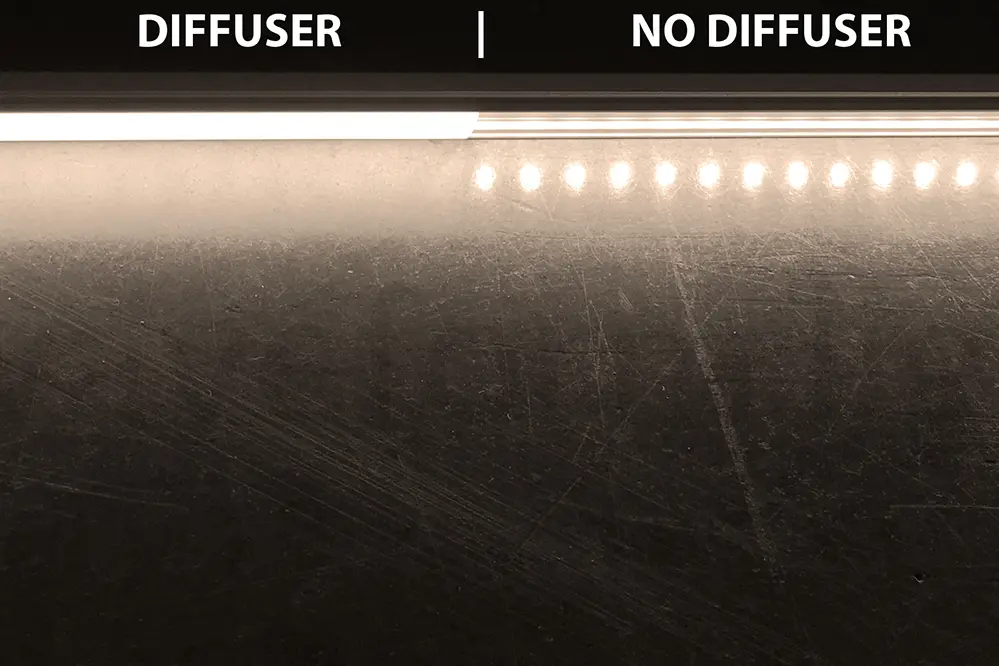How to choose LED diffusers for strip lights is a common dilemma many face when trying to create the perfect lighting fixture and ambiance. Picture this: you’ve installed your LED strip lights, but the light is too harsh and uneven, ruining the atmosphere you envisioned. This is a problem many encounter, but fortunately, it’s one that can be easily addressed with the right diffuser.
Addressing this issue is crucial because the quality of light can significantly impact the mood and functionality of a space. Poor lighting can lead to eye strain, reduced productivity, and an uninviting atmosphere. On the other hand, well-diffused lighting can enhance the overall experience, making spaces more comfortable and visually appealing.
There are various solutions to this problem, including different types of diffusers made from various materials and designs tailored to specific applications. This guide will walk you through the essential considerations to help you choose the best LED diffuser for your needs, covering topics such as how to choose LED diffusers for LED strip lights.
Stay tuned as we delve into the details of selecting the perfect LED diffuser, offering practical tips and expert insights to help you achieve the lighting setup of your dreams.
Understanding LED Diffusers
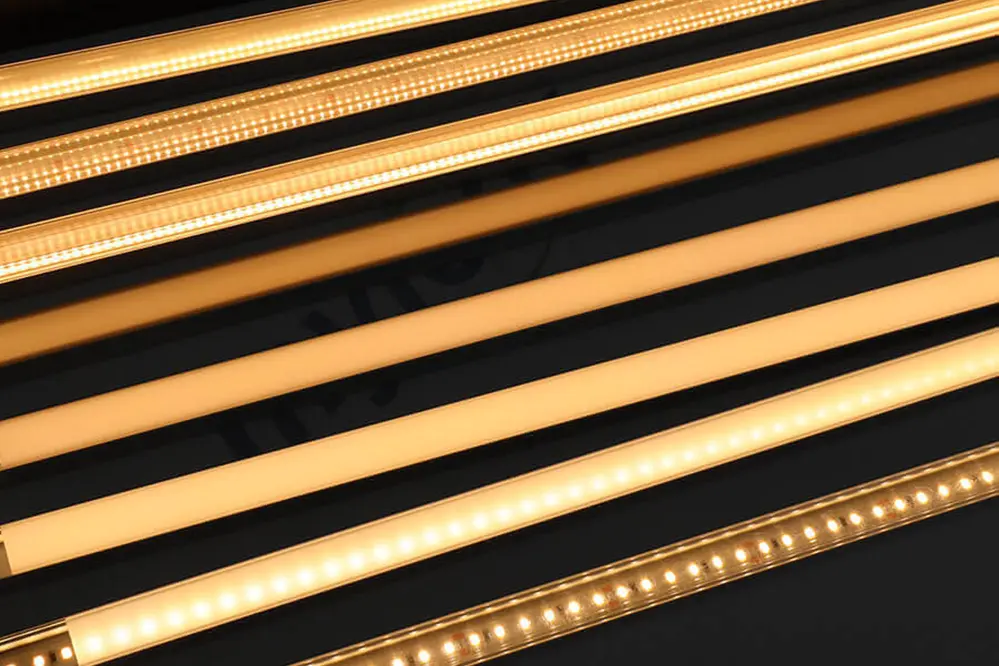
LED diffusers play a crucial role in enhancing lighting.
These devices scatter light more evenly and reduce glare, therefore creating a more uniform and visually pleasing illumination. The key purpose of LED diffusers is to balance the light distribution, making it not only aesthetically appealing but also functional. Professionals, whether in the realm of interior design or electronics, rely on diffusers to elevate the quality of light emitted from their LED strip lights.
The efficacy of diffusers cannot be overstated.
When properly chosen, these tools transform harsh, direct illumination into a soft, inviting glow – essential for creating the desired ambience in any space – thus allowing designs to reach their full potential.
In the quest of understanding LED diffusers, it’s imperative to consider the material composition, considering that different materials offer varying degrees of light diffusion. By mastering the selection process, designers and engineers can seamlessly integrate diffusers, crafting spaces that inspire and captivate admiration.
Types of LED Diffusers
Selecting the right LED diffuser involves understanding a variety of options, each with unique characteristics, benefits, and applications. Acrylic diffusers, for instance, offer excellent light transmission properties, providing a balance between light diffusion and clarity. Polycarbonate diffusers, on the other hand, are known for their durability and resistance to impact, making them suitable for more demanding environments. Additionally, frosted diffusers create a soft, ambient light by scattering the light more broadly, while opal diffusers achieve a uniform glow by diffusing light evenly across a surface. The choice between these types will hinge on the specific requirements of the project and desired lighting outcomes.
Frosted Diffusers
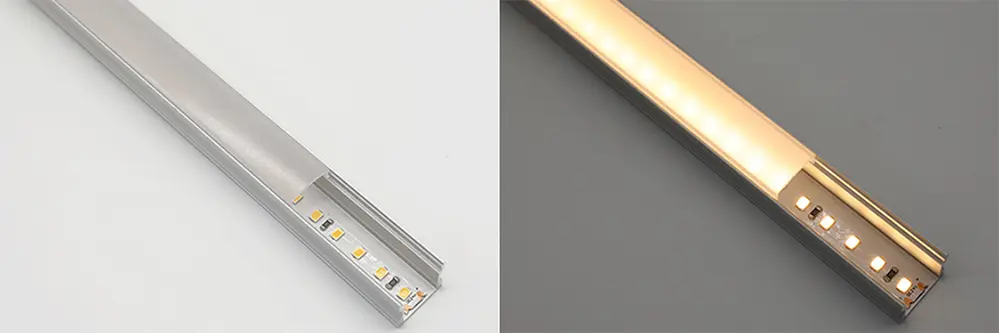
Frosted diffusers provide an elegant light distribution, enhancing the ambiance of any setting. They achieve this by scattering the light, which reduces harsh shadows and creates a soft glow.
Their ability to diffuse light evenly makes them ideal for applications requiring a consistent illumination. Frosted diffusers are often preferred in spaces like living rooms, galleries, and retail environments.
A frosted diffuser enhances the aesthetic appeal while reducing direct glare.
In addition to aesthetic benefits, frosted diffusers also contribute to energy efficiency. By maximizing the spread of light, they allow for the use of lower wattage LEDs without compromising brightness. This not only saves energy but also extends the lifespan of the LED strips.
Clear Diffusers
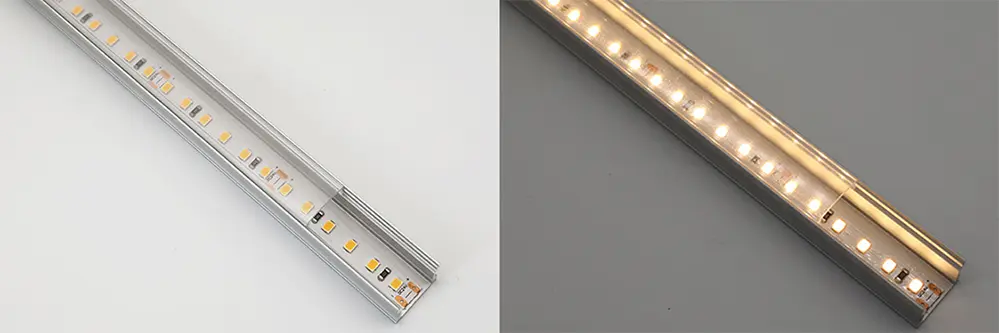
Clear diffusers are known for their transparency, allowing for undistorted light transmission and high brightness.
Unlike frosted or opal diffusers, a clear option maintains the pure intensity and color of the LED strip, making them a popular choice for task lighting, display cases, and applications where precision is key. Their transparency allows for maximum lumen output, ensuring that spaces needing high brightness levels are adequately illuminated.
Notwithstanding, they may not be suitable in environments where glare must be minimized. If reducing glare is a priority, it may be prudent to explore frosted or opal alternatives, which are better suited for diffusing light and eliminating harsh shadows.
Nevertheless, clear diffusers showcase the raw brilliance of LED strip lights, bringing out the full vibrance and chromatic richness of the LEDs. This makes them an excellent option for highlighting architectural features, creating accent lighting, or enhancing visibility without compromising on luminosity. As with any choice, the ultimate decision should reflect the specific lighting goals and functional needs of the project.
Opaque Diffusers
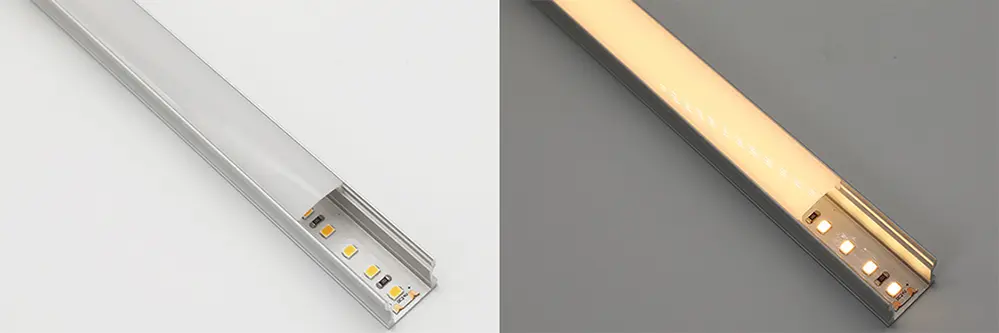
Opaque diffusers are designed to provide a uniform light output with minimal hot spots while offering flexibility in their applications. They effectively disperse light, ensuring smooth illumination.
- Glare reduction: Ideal for spaces where a softer light is desired.
- Even light distribution: Eliminates harsh shadows.
- Aesthetic enhancement: Creates a modern, sleek appearance.
- Versatility: Suitable for various applications, including residential and commercial settings.
These diffusers can diminish the intensity of the light, making them perfect for ambient lighting.
They are particularly useful in settings where a subtle light effect is required, enhancing the overall ambiance.
Benefits of Using LED Diffusers
LED diffusers offer several significant advantages that enhance the functionality and aesthetic of LED strip lights. By softening the emitted light, they create a more pleasant and inviting atmosphere.
Their ability to reduce glare makes them indispensable in environments needing consistent illumination. This not only makes tasks more manageable but also adds to the comfort of occupants.
In addition, LED diffusers contribute to a seamless lighting effect by distributing light evenly, thus eliminating harsh shadows. This results in spaces that are well-lit and visually appealing, augmenting both form and function.
Ultimately, incorporating LED diffusers is an effective way to elevate the lighting quality in any setting, be it a professional workspace or a cozy home environment. It ensures a higher degree of illumination efficiency and visual comfort, while simultaneously fostering a more welcoming and productive atmosphere.
How to Choose the Right LED Diffuser for Your Strip Lights
Choosing a suitable LED diffuser requires a balance of functionality, aesthetic appeal, and specific application needs. Firstly, consider the type of lighting effect desired, whether it’s softer illumination or a focused beam.
Next, assess the environment in which the strip lights will be installed, considering factors such as “task-focused areas.” If it’s for a space like a kitchen counter, opt for a diffuser that offers brighter, more consistent light. By meticulously evaluating these elements, one can ensure the chosen diffuser not only enhances the lighting but also complements the overall design aesthetic effectively.
Considering Brightness Levels
When contemplating lighting solutions, evaluating the brightness levels desired can significantly affect the choice of LED diffusers.
A crucial aspect in this determination hinges on a comprehensive understanding of the lumen output, where the ability of the diffuser to evenly distribute light becomes paramount. Those aiming for a brighter environment must select diffusers that can maintain high luminosity without causing glare, ensuring optimal lighting quality for detailed tasks and activities.
Conversely, lower brightness may be preferable for creating a softer, ambient setting. In such cases, choosing a diffuser with a higher opacity can help in achieving a gentle, diffused glow, perfect for relaxation areas or mood lighting.
Evaluating brightness levels, measured in lumens, also involves considering the spectrum of activities within the space. Thus, selecting an appropriate LED diffuser that harmonizes with the brightness requirements will ensure the lighting fulfills its intended function, contributing significantly to both aesthetic and practical aspects of the environment.
Evaluating the Beam Angle
Beam angle is a critical consideration when evaluating LED diffusers. The beam angle determines how light is distributed across a space, influencing both aesthetics and functionality.
Since 2010, lighting professionals have increasingly focused on optimizing beam angles to enhance various environmental settings, from residential to commercial spaces. Understanding the beam angle helps in deciding how wide or narrow the light dispersion should be for a particular application.
Indeed, it’s not merely about how far light reaches—it’s also about its intensity and consistency. A wider beam angle results in a more diffused light spread, ideal for larger areas needing uniform illumination without intense hot spots.
Conversely, a narrower beam angle focuses light more intensely on specific areas, useful for highlighting particular features or for tasks requiring concentrated lighting. Evaluating the beam angle, therefore, involves balancing these outcomes to meet the specific lighting objectives.
Professionals should weigh these aspects carefully to choose the ideal diffuser that maximizes both performance and visual comfort.
Assessing Color Consistency
When selecting LED diffusers for LED strip lights, ensuring color consistency is paramount to achieving cohesive and visually appealing illumination.
One must consider the diffuser’s translucency, as it plays a critical role in how evenly the light is dispersed. Higher quality diffusers typically exhibit superior color consistency, mitigating color shifts that can occur when light passes through the material.
Thus, selecting a diffuser with proven color stability helps maintain the integrity of the original LED color temperature. This ensures that the intended ambiance and aesthetic effect are preserved across different lighting conditions.
Consequently, prioritizing color consistency when choosing LED diffusers is indispensable for professionals seeking to deliver high-quality lighting solutions. By doing so, they not only uphold the visual coherence of spaces but also enhance the overall lighting experience, fostering environments that are both functional and inspiring.
Installation Tips for LED Diffusers
Proper placement and securing of LED diffusers significantly influence the light dispersion they achieve.
Ensure all materials are prepared before starting the installation to avoid interruptions.
Use channel mounts and end caps to fix the diffusers firmly, preventing any movement over time.
By choosing suitable adhesive tapes or mounting brackets, one can align the diffusers uniformly, thus ensuring an even glow across their entire length. This not only enhances the aesthetic appeal but also extends the lifespan of the lighting arrangement. Attention to detail, such as avoiding air bubbles, often results in a seamless and elegant finish.
p.s.: You can read our separate article: The Ultimate Guide to Aluminum Profiles for LED Strip Lights.
Maintenance and Care for LED Diffusers
Keeping LED diffusers in optimal condition is essential.
Regular cleaning should be part of their care routine. Dust and debris can accumulate over time and affect the light output, making periodic cleanings crucial. Simple materials such as a soft, damp cloth are generally sufficient to maintain their clarity. Avoiding harsh chemicals will preserve the diffuser’s integrity and aesthetic.
Protection from physical damage is equally important.
Install diffusers in locations where they are less likely to be knocked or scratched. If any scratches or marks appear, they should be addressed promptly to maintain the diffuser’s appearance and efficiency.
Finally, it is wise to occasionally inspect the diffusers for signs of wear and tear, ensuring their longevity. Documentation of any issues and maintenance actions taken can be valuable for future reference, ensuring the lighting system remains a reliable and enduring part of the environment.
Conclusion
Choosing the right LED diffuser is essential for enhancing lighting systems, impacting both aesthetics and performance. Understanding the role of diffusers and selecting the appropriate type based on material, design, and application ensures optimal light diffusion and adherence to style. This thoughtful approach contributes to superior lighting results, creating environments that are visually and functionally exceptional.
For those seeking expert guidance and high-quality products, contacting Unitop, a professional Chinese manufacturer of LED strip lights and LED neon strips, is highly recommended. With their extensive experience and commitment to excellence, Unitop can provide tailored solutions to meet specific lighting needs. By partnering with a reputable manufacturer like Unitop, individuals can ensure they receive top-notch products and support, paving the way for exceptional lighting outcomes.
